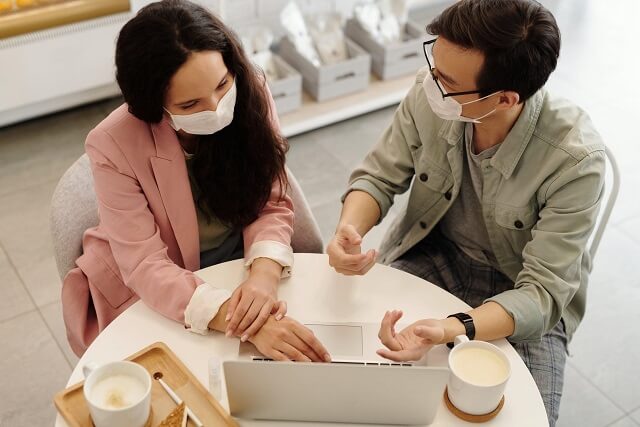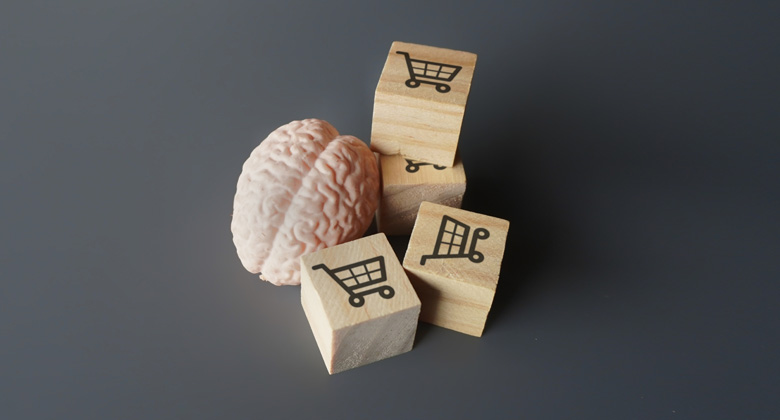Helpful Tips On How Brick and Mortar Stores Can Get Foot Traffic Post Covid-19
Winter is just around the corner meaning that COVID-19 could create an even tighter grip on the possibility of brick-and-mortar stores’ reopening. These stores are already going through waves of opening and closing in response to the pandemic which makes it difficult for businesses to stay in the present and drive foot traffic in post-COVID-19 society.
The Effect On Foot Traffic Amidst COVID
In respect to the Coronavirus, footfall monitor BRC-ShopperTrak Chief Executive Helen Dickinson has said: “July was the first full month in which shops were allowed to open in all parts of the UK. While retailers will welcome the improvement in footfall across all shopping destinations, it remains well down on pre-Coronavirus levels. The reopening of pubs, cafes and restaurants has also provided some additional footfall to many high streets, including a small boost to local retailers. It remains too soon to say how well retail will recover in the coming months, but it clearly remains a difficult trading period for many physical retailers.”
Currently in the UK, retail is starting to improve for brick-and-mortar stores, as numbers have shown a decrease in footfall from -62.6% in June to 42.1% in July. Although the recovery will be slow, the government and companies are working hard through trial and error to figure out the best ways to get consumers back into stores while still ensuring their health and safety.
In the meantime, companies can focus and work on driving online sales during Coronavirus to ensure a level of stability amongst the chaos currently happening.
6 Tips To Drive Foot Traffic In Post-COVID-19 Retail
For companies, either located in the UK or outside of it, who usually relied on in-store purchases as a leading factor in their sales, new trends for brick-and-mortar after COVID will need to be implemented if businesses want to recover from the initial impacts of the crisis.
1. Adapt To Contactless Payments: Many shops have already started using contactless payments for the majority of transactions, something that would be wise to implement into your own brick-and-mortar business. Consumers physically carrying money around is becoming more of a rarity as digital and money-less ways of payment grow in popularity. To attract these digitally spending consumers and keep up with hygienic protocols, your business being open to debit cards, credit cards, digital wallets and mobile payments use will likely help accomplish this. It’s an added layer of convenience that most customers now expect as standard.
2. Make Sure People Know Your Open For Business: In New York City alone, it’s been estimated that around a third of businesses will be unable to reopen, a figure that is similar in many other parts of the world meaning people may simply not know that your own store is open without any extra signs or announcements made. This could be a great time to incorporate digital marketing strategies into your business plan as well as reach a larger audience if marketing is done correctly, specifically across social platforms, as customers are actively looking for information about your brand.
3. Offer Exclusive Promotions: Offering exclusive discounts that are only active from in-store shopping will help increase foot traffic after COVID-19. Without offering these promotions online, it will likely persuade consumers to visit your location and shop in house as opposed to through an eCommerce site. For example, Benefit Brow Bar, when reopening after lockdown, began offering free products to their customers that had come in-person as a way to encourage sales that would have been lost over the previous months. Not only did this strategy attract business, but it helped to create loyal consumers that are likely to return, both digitally and in person.
4. Quality of Your Store’s Inventory: Besides factors such as price and customer service, consumers are also basing whether to shop in-stores based on the quality of a brand’s inventory. The companies that have invested a good chunk of money into quality materials are the businesses who are seeing great ROI even amidst the pandemic. Luxury clothing brand Chanel put out a message in the early stages of COVID-19 stating that there would actually be a price increase on its new collection coming out, yet consumers in Korea still lined up outside, waiting hours to purchase these expensive pieces knowing the high-quality standard of the goods they were purchasing.
5. BOPIS: Buy now and pick up in-store, otherwise known as BOPIS, is a welcoming way to start getting consumers back into your store without making anyone too anxious. The most time people spend in stores is when browsing so offering BOPIS to your audience can cut this delay out and allows customers to quickly pick up their purchases and be on their way. Retail brand Lord & Taylor’s, despite always offering BOPIS options, decided to heavily promote this service to consumers more recently as their stores are once again open to the public to shop.

Conclusion
Undoubtedly, eCommerce post-pandemic strategies will continue to grow in favour of focusing on enhancing consumer shopping behaviours. For businesses not yet wanting to give up on their in-person locations, they’ll have to work at crafting new approaches to promote foot traffic if they want to survive. Overall, morale should still be high as there is hope for brick-and-mortar stores if they are willing to adapt to the situation at hand and continue to innovate moving forward.
Subscribe To Us
Contributors
Categories
Subscribe To Us
Contributors
Categories

This website uses cookies so that we can provide you with the best user experience possible. Cookie information is stored in your browser and performs functions such as recognising you when you return to our website and helping our team to understand which sections of the website you find most interesting and useful. Third party cookies such as Google Analytics is also used on this site to provide analytics in order to better understand the user engagement on our site.
You can adjust all of your cookie settings by navigating the tabs on the left hand side.
Strictly Necessary Cookie should be enabled at all times so that we can save your preferences for cookie settings.
If you disable this cookie, we will not be able to save your preferences. This means that every time you visit this website you will need to enable or disable cookies again.







0.Comments